We learn from history so that we don't repeat it. But more than that, we often study history to learn of HOW people lived in the past - it's fascinating. One of the most studied periods in history is that of World War II, and the battlefields in Europe.
We've recently discovered an extraordinary film series that gives a glimpse into this time period. It includes The Americans on D-Day (following the events on June 6, 1944), The Americans on Hell's Highway (heading from the Belgian-Dutch border up Hell's Highway), and The Americans in The Bulge (from the Ardennes Forest to Malmedy, St. Vith, and Bastogne). The series is hosted by Ellwood von Seibold, who throws himself into the role. There are also archival clips, re-enactments, and interviews with WWII veterans. The film series is produced by Livingbattlefield, LLC, and is airing on public television starting this summer. It's impressive!
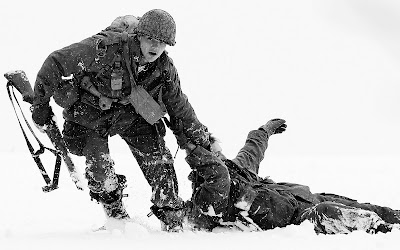
The American Legion wrote of the first film in the series, “For those who have never been to Normandy, “The Americans on D-Day” is the next best thing to being there. And for those who have visited those hallowed beaches in northern France, this program will add well-crafted detail to your experience.”

We were lucky enough to interview Heidi Mehltretter, Executive Director of Livingbattlefield. Here's what she had to say...
WE: Please tell us about The American Road to Victory...
HM: Conscious of a need for change in historical documentary film making, the producers set out to create historical documentaries that not only enlightened, but also entertained. Our goal was to make these films in the actual locations where the events occurred, underlining the authenticity of the subject matter while allowing viewers the chance to travel with the story.
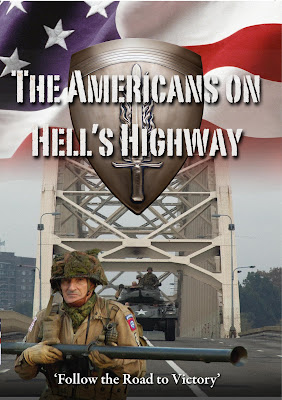
WE: What was the genesis of this series?
HM: Based in Normandy near Sainte Marie Eglise, a town made famous because American paratroopers dropped there on D-Day, Livingbattlefield began to gather video interviews with veterans returning to Normandy. When the veterans stood in the actual places where they fought, their memories came flooding back. Often three generations of family would return with the veterans, showing how young people’s interest peaked when visiting these sites first hand.
A friendship with battlefield tour guide, Ellwood von Seibold, showed the potential of blending the enthusiasm of the tour guide approach with the gravitas of the veteran stories. Designing reenactments of specific veteran stories required re-enactors to visit the exact locations where the events took place, at the same time of year and often the same time of day to re-create what was being described. Throughout the films, location is as important as story. Animated maps keep viewers aware of exactly where actions took place. The films are truly history meeting travel.
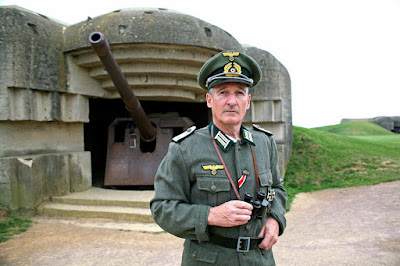
WE: Can you please tell us more about Ellwood von Seibold, the host?
HM: Ellwood is a Canadian living in France, with a German name, who grew up in Britain and is crazy about American military history of World Wars I and II. He lives in Ste. Mere Eglise, Normandy, where he conducts tours under the name D-Day Battle Tours. Ellwood is a collector of military artifacts, weapons and uniforms, many of which he allowed the filmmakers to use for the series.
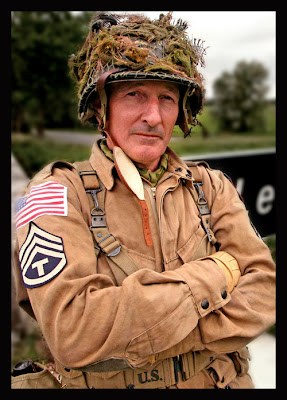
Here is a short video we made of Ellwood, where he talks about how he got into the films.
In the films, we see Ellwood as playing the role of an eccentric history teacher who takes the viewers through the actions. He is not an actor, but rather a skilled battlefield guide - passionate and knowledgeable. He uses costumes and props to propel the students into the story. Ellwood is that teacher we seldom had, but never forgot.
WE: What sort of research did your team do for this series?
HM: Considerable research - books on World War II, four or five accounts of the same battle at the same time, spread over a medieval dining table and walking back and forth with post its and a pen, marking passages. Also, military chat rooms and WWII video games. We look for actions in the films and games that will be familiar to this audience and includes some of them in the films. The idea behind it is to give the viewer an enthusiastic sense of “oh, yes, I KNOW this part!”
Then mapping, scouting, and discovery. The script is written, and then fact checked again by historians.
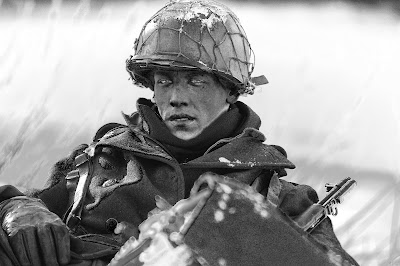
WE: How did you film it?
HM: The American Road to Victory received tremendous support in the locations where we filmed. In the Netherlands, especially, the local people went out of their way to help, even closing the Nijmegen bridge, a major thoroughfare between Germany and Holland, so we could drive a vintage tank across it. One lady even allowed us to throw a (disarmed) grenade into her house – the actual house where the veteran had thrown the grenade during battle!
Some of the filming required rare tanks, which are extremely difficult to find in operational condition. For these scenes, we worked with a miniature, remote control tank manufacturer, Mark 1 Tanks, out of England. We were able to film these small tanks on blue screen and then cut them into the live reenactments using computer effects.
Poor Ellwood suffered during much of the filming as he was forced to do take after take, often scrunched into a frozen foxhole, or climbing a rope ladder, or running across a bridge with a bazooka in hand. Often, Ellwood wore original uniforms relating to each part of his tour.
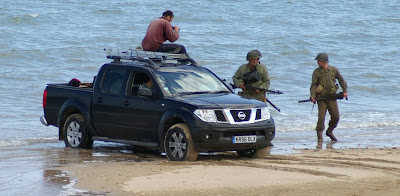
WE: How can we best utilize this series to teach about WWII?
HM: I asked Doug Barber, an Ohio high school history teacher, who has helped us develop lesson plans, to answer this question for us.
As I see it, the "American Road to Victory" series is best used during any in-depth examination of the turning point events on the western front in the ETO during WWII. The concept on which the films are based (live action narration) lends itself easily to any educator wanting to make these complex events more understandable for their students.
As a practical matter, WWII is a huge unit of study. It is taught as a required unit in all American high schools and many middle schools. How in-depth it is taught varies widely from teacher to teacher. Anyone who teaches WWII will certainly cover D-Day and most will cover The Battle of the Bulge. Only those going deep into the topic will cover "Market Garden".
By using this series students will gain an understanding of the pivotal events of the final year of the European part of WWII. Students will learn the vocabulary of the events as well as the strategic and tactical considerations, equipment used, and the notable individuals involved.
The bottom line(s) for me as an educator in using this series is the novel way in which it was done. The combination of the state of the art production values and Ellwood's (very engaging) live action narration, make the films interesting and easy to view for students or anyone wanting to learn about the events covered. Making these three fairly complex events understandable is a commendable achievement. I was struck by this upon the first viewing of each film.
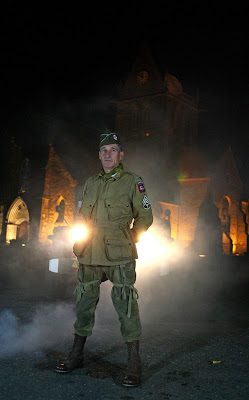
WE: Is there anything else you'd like to share with us?
HM: We want to reach a younger generation with stories of the "Greatest Generation." We want to light a spark with the films, and fan the flame through blog and Facebook discussions, and whet young appetites for new material, such as a similar series on WWI.
I wanted to share with you a comment that we received from eminent historian and college professor, John McManus:
"My compliments on your fine film "The Americans on Hell's Highway." I liked it very much and found it quite informative for my work. I really liked how you melded present day footage with the veterans' accounts and the reenanctors. The film was accurate, and the story was well told, with just the right tone of deep respect for the participants but with historical detachment. I am currently researching a new book called "September Hope: Operation Market Garden and the American Experience in Holland, Fall 1944" (NAL/Caliber is the publisher) so I naturally was eager to see your film."
WE: Thanks so very much, Heidi! We highly recommend this film series to our Wandering Educators.
For more information, please see:
http://www.livingbattlefield.org
All photos courtesy and copyright Livingbattlefield, LLC
